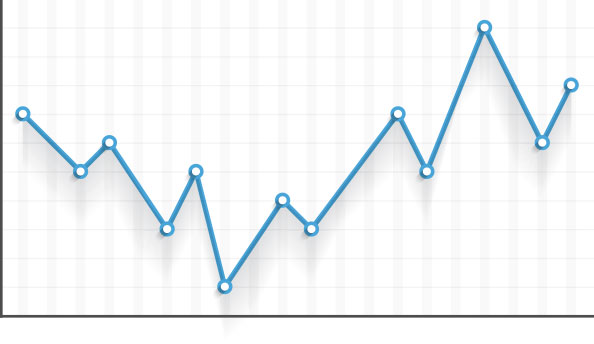
Can You Time the Market?
Yes. Utilizing effective technical analysis techniques and market timing indicators, you can successfully time the market. Most investors and traders have a great deal of difficulty accurately assessing near term market conditions. Believing you cannot time the market is a fallacy. After all, if that were true, high frequency trading and algorithm trading would not exist; let alone account for the majority of trading volume.
You can time the market for maximum gains, and you can time the market to avoid unnecessary risk. Most technical indicators offer little stand-alone value in predicting price direction and many investors do not understand how to properly utilize and interpret even basic indicators such as MACD. However, there are a few indicators that when analyzed together as a composite, allow you to accurately predict trend changes before they occur.
Technical Analysis
How Technical Analysis works depends on which indicators you are using and how you are measuring. The textbook definition of Technical Analysis is that supply and demand determine prices, and changes in supply (selling) and demand (buying) will change prices. Technical Analysis of stock trends should result in being able to not just identify tops and bottoms, but to also identify a narrow range of potential outcomes; so that you are able to accurately identify risk vs reward at any point in time. This is why Technical Analysis is important; even for long term investors relying on Fundamental Analysis for investment decisions, inopportune timing can be extremely costly to long term gains.
The uninitiated who believe Technical Analysis is non-sense should consider that NASDAQ estimates that “50 percent of stock trading volume in the U.S. is currently driven by computer-backed high frequency trading”. Furthermore, JP Morgan estimates “Fundamental discretionary traders account for only about 10 percent of trading volume in stocks today”. Citing “The majority of equity investors today don’t buy or sell stocks based on stock specific fundamentals” (www.cnb.cx/2YTbsCe, 13 June 2017), this is why Technical Analysis is important. If you’re still in need of more evidence the stock market moves on technical analysis, consider the fact that Market Makers electronically process and recalculate bid and ask price based on order flow (supply and demand). The bid and ask price are set by software using algorithms.
Investors and traders relying on Fundamental Analysis often find themselves confused when stock prices behave unexpectedly to news. It is not the news that drives stock prices each day. What you are seeing is stock prices moving in the direction of supply and demand, and the financial media correlates stock prices to the news of the day. What can be observed is an acceleration of price momentum after a news announcement, however price direction is always in-line with the technical picture immediately preceding the announcement. Once you accept this and see the market through the lens of Technical Analysis, you no longer get surprised by price direction to news events; and financial news media ascribing price action to a particular slew of economic reports becomes comical. You can read about my own personal awakening on my About Me page.
Algorithms are using quantitative data to predict price direction and so are the majority of investors as noted by JP Morgan. If the majority of price action is based on quantitative data (technical analysis) then it is irrational to ignore it. Technical Analysis is reliable when you use a complementary set of indicators whose underlying calculations measure different aspects of price action. In most trading classes you will learn Technical Analysis associated with a particular trade setup. It is better to learn Technical Analysis in a way that you can apply it to any market, any asset, at any point in time; and predict price direction to maximize profits, reduce risk and formulate your own strategy suitable to your needs and proclivities.
Trading Mentor and Trading Classes
Having a mentor for trading and investment you can work with one on one, is leaps and bounds more effective than taking trading classes online. Online trading classes can come in the form of a library of information you pay to acquire and are supposed to teach yourself over the course of weeks; or through virtual sit in sessions of pre-canned material. Both options make absorbing and applying the concepts difficult, as well as needlessly time consuming, as many are high on quantity of information, but low on quality. Most of all, the biggest problem with trading classes is that you walk away with learning a few trade setups from someone else’s system; instead of an expanded awareness of market mechanics.
After just two personalized sessions with me, you will be able to spot danger and opportunity in any market, stock, or asset class; at any point in time. From the knowledge and skills gained, you will be able to develop your own strategies that meet your needs and appetite for risk. Your market timing will dramatically improve, you will be able to see oncoming trend reversals, identify price bottom’s in real time, and be able to recognize whether a trend is likely to continue or discontinue. Trading classes online tend to segment into trading classes for beginners or technical analysis for beginners and technical analysis for the trading professional. Whether you are a beginner, professional or anything in-between I guarantee you will learn new insights, techniques, and methods that will enable you to better anticipate swings and increase your accuracy in identifying tops, bottoms and other reliable price behavior you can profit from.

